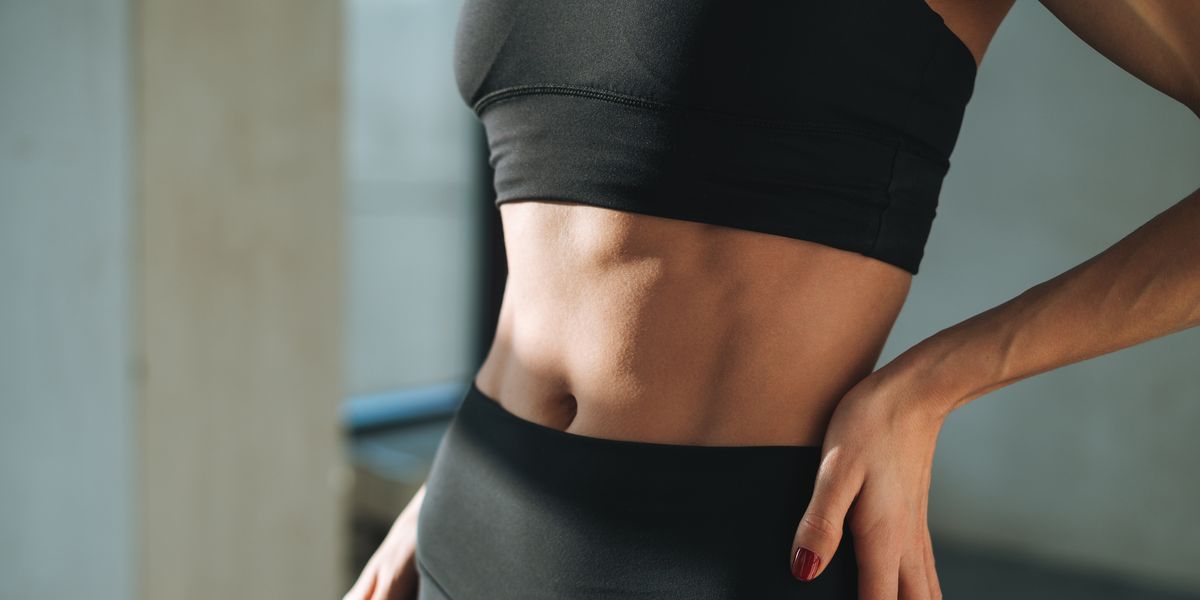Want a no-equipment abs exercise that can be done anywhere—but *so over* basic crunches? Enter: the V-up.
Also known as a jackknife, the bodyweight move recruits the entire core and provides a stability challenge that sit-ups and crunches just can’t get ya. And while it’s a challenging pose on its own, you can also easily level up the exercise. Starting every rep from a hollow body (the position where you’re flat on your back with your arms and legs straight and raised off the floor slightly) will increase your strength and core endurance. Your core will definitely be tested, and you’ll thank me later.
Want to add V-ups to your routine? I’ve got you. As a certified personal trainer, I’m going to teach you everything you need to know about V-ups—from the benefits, technique, variations, and more.
How To Do A V-Up With Proper Form
- Lie face-up on the floor with legs and arms straight. For added challenge, hover limbs off the floor slightly.
- In one movement, lift torso and legs as if you’re trying to touch your toes.
- Lower body back down. That’s 1 rep.
Form cue: I can’t say it enough, but make sure you start with your abs engaged and your lower back touching the ground, instead of arching your back when you’re lying down. If you don’t, you could experience serious discomfort or pain in your lower back. Another important tip? Make sure its your upper body that’s starting the initiation of coming up, rather than your legs. The key here again is to use that core.
Reps/sets for best results: I would suggest starting off with 3 sets of 12. Then as you progress you can do 3 sets of 15 or go for 3 rounds of 45 seconds, doing as many reps as possible in that timeframe.
Benefits Of V-Ups
Two words: core strength. Remember this move is a bodyweight exercise, meaning that your weight is going to be the resistance you’re using. You’ll be forced to rely on your core strength to get your torso up and close to touching your legs. The move involves some serious upper and lower abs work. When done properly, you’ll start to see some core definition pretty quickly.
V-Up Variations
There are plenty of fun ways to switch up this move. Whether you want to modify your v-up after a heavy abs workout or test your core strength even more, here are a few options for you.
- Try tuck-ups: Start in the same position, lying face-up with your lower back touching the ground and your arms and legs straight, lifted slightly off the floor. But this time as you lift up, bring your knees in toward your chest and make sure to hug your knees at the top of the position (instead of trying to touch your toes like you did in the V-up). Then release and begin again. This will take the pressure out of the hip flexors.
- Turn them into alternating jackknives: This is basically still a V-up, but lifting up one leg up at time. This will add more work into your obliques, which is always a great variation.
- Go for straddle V-ups: Again, start by lying face-up on the ground and lifting your legs and arms slightly off of the floor. But instead of lifting your legs straight up as you did in the V-up, you’re going to straddle them out to the side and upwards, while your arms reach toward the center. This is one of my favorite core exercises. It will target your lower abs even more than a regular V-up.
How To Add V-Ups To Your Routine
- Add them to your core warm up. V-ups are great move to do at the beginning of a workout. They’ll get your heart rate going, which will get more oxygen and blood to your muscles.
- Do them in between other moves. Say you’re doing a seated row followed by a chest press. Try adding V-ups in between, working three exercises into your circuit this time around. This will maximize your upper body work, ultimately leading to stronger.
- Do them as a finisher. You’ll automatically feel it in your core and V-ups will spike your heart rate up again at the close of your workout, making sure that blood and oxygen are flowing to all the right places.
Tatiana Lampa is an ACSM-certified personal trainer and instructor at Fit House in New York City.
Read the full article here




